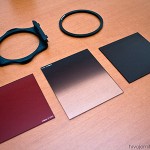7 tips for nature photographers
If you like photographing nature (like I do), there’s a pretty good chance you’ll sooner or later end up in the woods. I’m not a scout, nor I ever was one, but I can give you a few handy tips from my perspective as a photographer.
So, here is some advice for all the nature photographers out there.
No.1 Buy an all-weather backpack. There is always a slight chance of local thunderstorms (during summer and spring), or just ordinary light rain or fog during autumns, and of course, snow during winter. Water (in any form) can do serious damage to an electronic device. This also refers to condensation, which is done by vast change of temperature (for example if you bring your camera from and -10° outside environment to your +25° in the living room). This can easily be avoided by turning the camera of for a few hours, to get used to a new temperature, or you can just buy a few bags of silica to pick up all the humidity inside the bag.
No.2 Dress appropriately and conveniently. This means that I definitely wouldn’t suggest light sneakers, jeans, and a new white jacket, because chances are – you’ll get dirty! Some older and “untrendy” clothes will do just fine. Remember, you are not going modeling. Hiking boots might come in handy. Dressing in layers would also be a smart thing to do.
No.3 Bring all equipment that you have. I’ve read a dozen suggestions about bringing only your most important equipment. This is applicable only if you have 10 lenses, 2 bodies, and simply not enough room to carry all that. Even so, try to carry as much as you can. When you find a good scene, and have a privilege to take it with a few lenses, you’ll see that it will pay off very soon.
No.4 Don’t be lazy. Since you brought all the equipment, it would be a sacrilege not to use it, even if it takes a few minutes to prepare.
[ad#ad-2]
No.5 Always look behind you. I don’t indicate here on spotting wild animals behind your back, but to expand your horizons. Usually we don’t really concentrate on looking behind us while walking. Many times I have found myself in a situation of perceiving a great scene, just by spontaneously looking behind me.
No.6 Be creative. Experiment with perspectives. Anything is allowed. Don’t just focus on landscape type “snapshots”, try to think differently – get your clothes a dirty if you have to. For a good photo, anything will pay off.
No.7 Use filters. You could get pretty good results by post-processing your photos digitally in PS, but the best results are obtained by using creative filters. Many photographers will tell you circular polarizer is a “must have”, but this is not necessarily true. It really depends on a scene. If you are photographing deeply in the woods, you won’t get much using a polarizing filter. On the other hand, some gradual ND filters will definitely help you to get the right exposure and dynamical range.
If you follow those few obvious tips, I’m sure you’ll get better photographing results, supposedly at your next trip to “the wild”.







Watch+